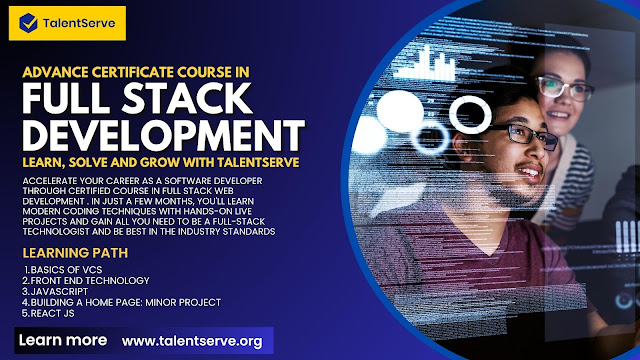Advance Certificate course in Data Science | Learn With TalentServe
In recent years, data science has become one of the most sought-after skills in the job market. As businesses increasingly rely on data to make decisions, they need employees who can collect, analyze, and interpret that data. A Data Science course can teach you the skills you need to pursue a career in this field. In a Data Science course, you will learn how to use statistical techniques to analyze data sets, identify patterns, and build predictive models. You will also learn how to use programming languages like R and Python to clean, manipulate, and visualize data.
The benefits of taking a Data Science course go beyond just improving your employability. A good Data Science course will also give you the opportunity to work on real-world projects with real data sets. This will provide you with a chance to put your newly acquired skills into practice and hone your craft. This course will cover the fundamental concepts of data science, including data wrangling, exploratory data analysis, predictive modeling, and communication of results. Students will learn to apply these methods to real-world datasets to derive actionable insights.
The course will also cover the ethical considerations involved in working with data, as well as the impact of data science on society. The Data Science training course is designed for people who want to learn Data Science from scratch or improve their Data Science skills. The course starts with the basics of Python programming and moves on to cover various important topics in data manipulation, analysis, and visualization. By the end of this course, you will be well-versed in all the concepts related to data science and will be able to apply them in practice. for more details, you can check our site: https://www.talentserve.org/course-datascience
COURSE CONTENT
Introduction to Python
Basic Steps
NUMPY
Data Visualization
Pandas
Exceptions and Errors
Introduction to Artificial Intelligence and Machine Learning
Data Wrangling and Manipulation
Supervised Learning
Supervised Learning-Classification
Unsupervised learning
Machine Learning Pipeline Building
Decision Tree Analysis and Ensemble Learning
AI and Deep learning introduction
Artificial Neural Network
Deep Neural Network & Tools
Deep Neural Net optimization, tuning, interpretability
Convolutional Neural Net
Recurrent Neural Networks
Overfit and underfit
Transfer Learning
Working with Generative Adversarial Networks
Pytorch
.jpg)


.jpg)
Comments
Post a Comment